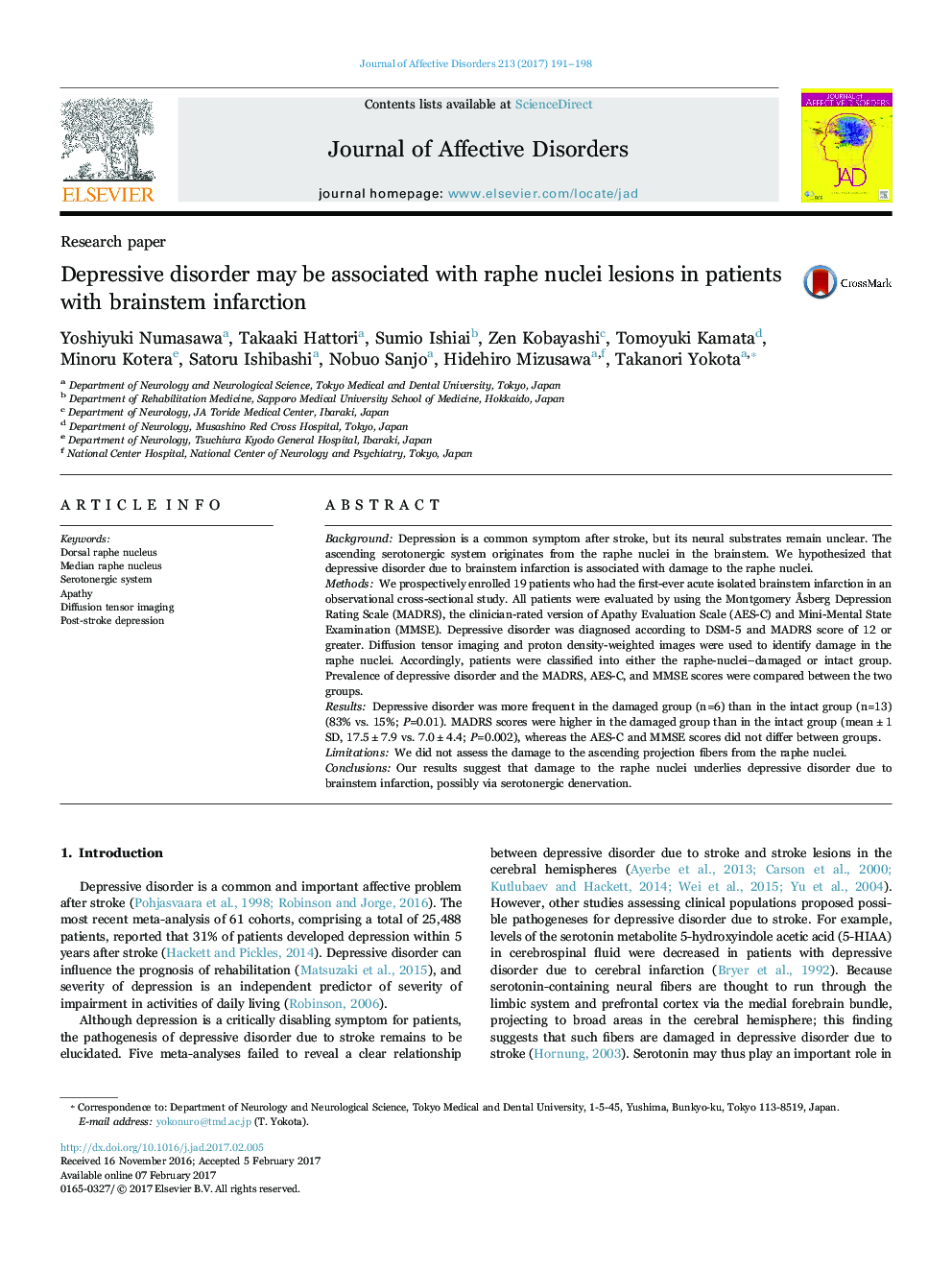| Article ID | Journal | Published Year | Pages | File Type |
|---|---|---|---|---|
| 5722247 | Journal of Affective Disorders | 2017 | 8 Pages |
â¢Depressive disorder was more frequent in the raphe-nuclei-damaged patients with brainstem infarction.â¢Montgomery à sberg Depression Rating Scale scores were higher in the damaged patients.â¢Diffusion tensor imaging and proton density-weighted images were used to identify the damage in the dorsal and median raphe nucleus.â¢Findings suggest that the disruption of the ascending serotonergic system is a key mechanism underlying depressive disorder due to stroke.
BackgroundDepression is a common symptom after stroke, but its neural substrates remain unclear. The ascending serotonergic system originates from the raphe nuclei in the brainstem. We hypothesized that depressive disorder due to brainstem infarction is associated with damage to the raphe nuclei.MethodsWe prospectively enrolled 19 patients who had the first-ever acute isolated brainstem infarction in an observational cross-sectional study. All patients were evaluated by using the Montgomery à sberg Depression Rating Scale (MADRS), the clinician-rated version of Apathy Evaluation Scale (AES-C) and Mini-Mental State Examination (MMSE). Depressive disorder was diagnosed according to DSM-5 and MADRS score of 12 or greater. Diffusion tensor imaging and proton density-weighted images were used to identify damage in the raphe nuclei. Accordingly, patients were classified into either the raphe-nuclei-damaged or intact group. Prevalence of depressive disorder and the MADRS, AES-C, and MMSE scores were compared between the two groups.ResultsDepressive disorder was more frequent in the damaged group (n=6) than in the intact group (n=13) (83% vs. 15%; P=0.01). MADRS scores were higher in the damaged group than in the intact group (mean±1 SD, 17.5±7.9 vs. 7.0±4.4; P=0.002), whereas the AES-C and MMSE scores did not differ between groups.LimitationsWe did not assess the damage to the ascending projection fibers from the raphe nuclei.ConclusionsOur results suggest that damage to the raphe nuclei underlies depressive disorder due to brainstem infarction, possibly via serotonergic denervation.
